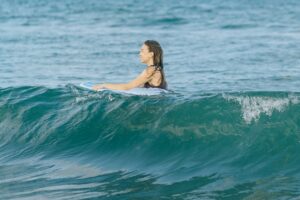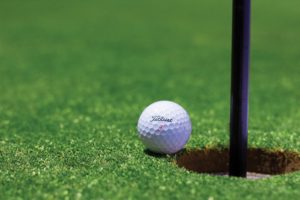Factors Affecting Longboarding Experience

If you are a longboarding player, do you know what factors that can affect your experience in this sport? Read this article to know more!
Most young people today face a lot of pressure, especially with a busy life in big cities.
A word of the current song encourages young people to leave the city, returning to their homeland, “raising fish and growing vegetables.” However, there are other ways you can get rid of the existing pressures which don’t require you to leave the city.
Longboarding, an art that is becoming a trend of young people today, is a way to help you have a great experience. This sport originated from surfing. Like skateboarding, longboarding is “terrestrial surfing”. The player stands on a board with wheels and glides on the ground.
Visit here to learn more about longboard for beginners before you start.
Longboarding players
The difference between longboarding and skateboarding is the shape and length of the board. In longboarding, skis are much longer and more extensive than skateboarding boards, even more than 1.5m long, like a board for surfing.
Longboarding players come to this art primarily because of the satisfaction of conquering obstacles with mechanical movements. However, it is not always possible for players to achieve the expected comfort. Many different factors influence the longboarding player’s experience.
OK! Let’s figure out!
1. Landscape factor
The landscape has an enormous influence on your experience when playing longboarding. Landscape factors that will affect one’s longboarding background include:
– Territory cost
– Territory rise
– Territory surface
Territory directs which kind of rider can do what and with which longboard. If the territory cost is winding, a rider needs more experience and a progressive flexibility board while straights can be taken care of by amateurs on practically any longboard.
The less raised landscape is most appropriate for learners and confines a rider to for the most part cruising. High rise territory requires an accomplished equestrian and a longboard suitable for downhill riding.
Landscape surface is significant in deciding the smoothness of the ride. It determines the decision of longboard wheels, wheelbase, and other board attributes.
The more challenging the landscape is, all the more exhilarating the experience. Steep, winding inclines give an adrenaline surge one can’t see involvement while longboarding on delicately slanting straights.
However, additionally testing landscape requires more expertise and experience in favor of the rider and cautious choice of a longboard.
2. Rider factors
Rider variables are the absolute most significant with regards to deciding longboarding background. They include:
– Rider aptitudes
– Rider experience
– Rider weight
Longboarding is undoubtedly exciting and fun. In any case, riding abilities go far in making it considerably progressively enjoyable.
Aptitudes as a rider are significant since the more experienced you are, the better time you can have with longboarding. While a novice can serenely voyage, an accomplished rider freeriding can do traps and appreciate the ride considerably more.
Rider experience decides the style of riding and the decision of a longboard.
Downhill riding calls for more involvement and aptitudes contrasted with cruising. Some longboards are progressively appropriate for amateurs because of components like a longboard’s deck height, length, and wheelbase.
The heaviness of a rider is significant in the quickening and top speed. Weight influences speed and quickens through grating and energy. A heavier rider has slower increasing rate contrasted with a lighter rider.
Notwithstanding, a heavier rider will regularly have a higher top speed. Littler riders can use shorter sheets with gentler wheels. Substantial riders need greater longboards with harder wheels which experience less distortion because of weight.
3. Longboard factors
The longboard elements are one of the most significant factors ìnluencing longboarding experience.
They give the most adaptability contrasted with territory and rider factors. Deciding the sort of longboard to go for is simple while changing territory or rider variables may not be conceivable, attractive, or time-consuming.
Some longboards qualities that have a significant influence as far as one can tell include:
– Board material
– Longboard trucks
– Board flex
– Longboard wheels
a. Board material
The equipment used in making a longboard can change riding background. The absolute most mainstream materials for longboard development incorporate maple, bamboo, and carbon fiber.
Maple longboards are durable and sturdy. The material makes it appropriate for harsh and hard riding.
Bamboo longboards are light and adaptable. They are anything but difficult to convey and appropriate for transportation, cruising and road cutting, making them perfect for novices and devotees.
Carbon fiber longboards are costly, light, and stable. They are favored by professional skaters for their speed and simplicity of mobility when turning, cutting, and sliding.
b. Longboard trucks
Truck width decides how steady and flexibility a longboard is. The more extensive the track width, the more regular the longboard. A more slender vehicle gives more speed and mobility when turning.
Boss setup is additionally critical as it changes the longboarding background. Standard boss trucks give a more keen reaction and are increasingly appropriate for doing traps and free-form riding.
Turn around boss trucks give a smoother reaction and riding knowledge. They are increasingly responsive at moderate speeds and have better solidness and control at high rates.
The bushing seat of a longboard truck assumes a job in the board’s mobility and soundness.
Tight bushing seats limit truck development. It makes them appropriate for quick riding while at the same time being less elating at slower speeds. Unrestrictive bushing seats give more responsiveness and fit sharp cutting and turning with little power.
c. Board flex
The flex of a best longboard decides how stable the board is and alludes to its adaptability and stun retaining properties.
A few properties of a best longboard that influence board flex incorporate length, material, and sunken. Longboards with delicate flex have astonishing stun engrossing properties and appropriate for smooth cruising, playing out specific traps and longboarding on unpleasant streets and surfaces.
Medium flex gives great stun retaining properties and some solidness at speed. They provide a spring-like feel which expands vitality while cutting or pushing.
Medium flex longboards are appropriate to driving, cruising at moderate speeds and cutting.
Firm flex longboards are less lenient with regards to the harshness of the surface and require smoother surfaces. They give greater strength at moderate to high speeds and an increasingly improved and invigorating longboarding knowledge.
They are most appropriate for downhill riding, dashing, besieging slopes and freeriding.
d. Longboard wheels
Wheels are significant in deciding hold, speed, cornering capacity, and solidness.
Littler wheels result in quicker speeding up yet make for a rougher ride. Bigger wheels give a smoother ride, and even though their increasing speed is slower, the hit higher top paces contrasted and little wheels.
Other wheel properties that influence one’s longboarding background are durometer (hardness), contact fix width, kind of wheel lips, and center situation to give some examples.
The frame of mind of the rider is likewise significant as is longboarding with companions and relatives.
Conclusion
I have told you some factors affecting your longboarding experience. Knowing them, you can manage to have the most satisfying feeling when playing longboard. It’s not the end. Let me tell you a secret! The ideal approach to appreciate superior longboarding knowledge is to do it over and over. Next time, share your story with your longboarding here!
Faqs:
Can longboarding give you abs?
Longboarding primarily engages your lower body muscles and core for stability, but it alone is not sufficient to give you defined abs. To get visible abs, you’d need to combine longboarding with a proper diet and targeted core exercises.
What makes a longboard high performance?
High-performance longboards are characterized by factors such as the deck’s construction, wheel quality, trucks’ responsiveness, and bearings’ speed. These components collectively enhance stability, speed, and maneuverability, making the board more suitable for advanced riders.
How do you reduce speed wobble on a longboard?
To reduce speed wobble, maintain a low and balanced stance, adjust your weight distribution, tighten your trucks, and practice stability techniques. It’s crucial to build your confidence and experience gradually to minimize wobble at high speeds.
Does longboarding take skill?
Yes, longboarding requires skill. It involves balance, control, carving, and understanding how to navigate different terrains. Developing these skills takes practice and experience.
Why do longboarders crouch?
Longboarders crouch to lower their center of gravity, increasing stability and control. This position allows for better balance and helps in maintaining control at higher speeds or when going downhill.
Is longboarding considered a sport?
Yes, longboarding is considered a sport. It involves physical activity, skill, and competition in various disciplines such as downhill racing, freestyle, and slalom.
Am I too old to start longboarding?
You’re never too old to start longboarding. People of all ages can enjoy longboarding, and it’s a fantastic way to stay active and have fun. Just start at your own pace and wear proper safety gear.
What is riding a longboard called?
Riding a longboard is simply called “longboarding.” It’s the sport and activity of riding a longboard skateboard.
Is shortboarding harder than longboarding?
Shortboarding (traditional skateboarding) is generally considered more challenging for beginners due to its smaller deck and narrower wheelbase. Longboarding is often easier to start with because of its stability, but both can become equally challenging at an advanced level.
How fast can you push on a longboard?
The speed you can achieve on a longboard depends on your skill level, the terrain, and the board’s design. Skilled riders can reach speeds of 30-50 miles per hour or more when downhill longboarding, while cruising or pushing on flat terrain is typically slower.






